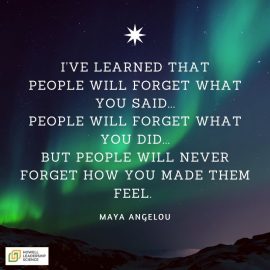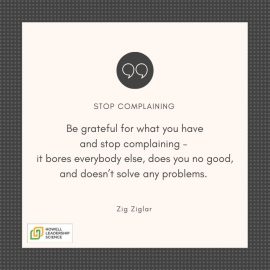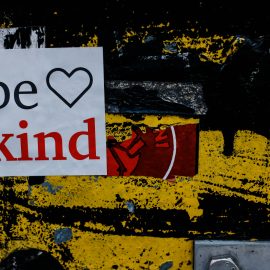Invest 5 minutes a day to create a better workplace
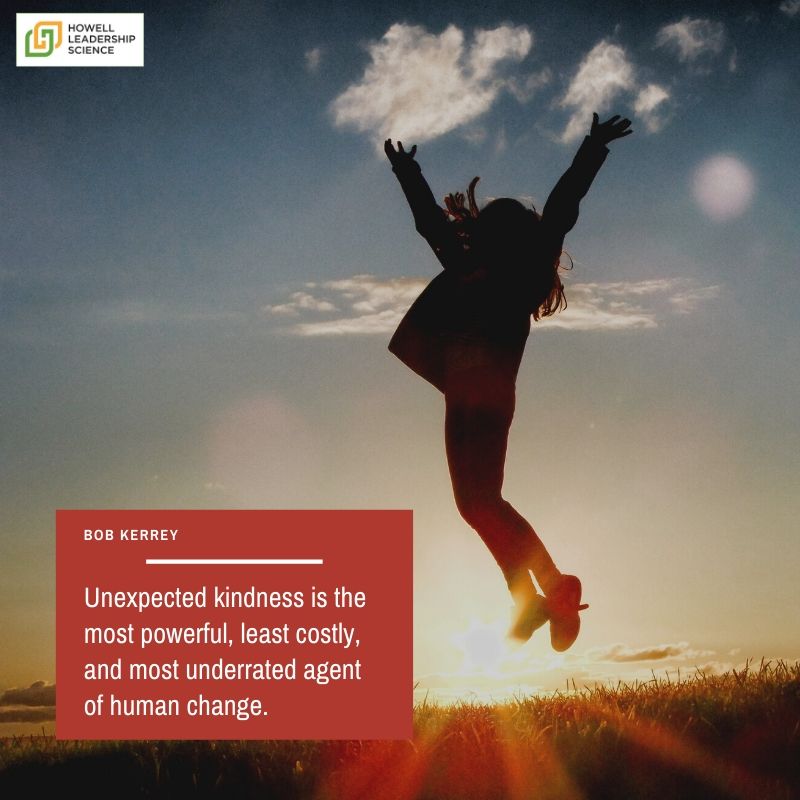
Welcome to Week 4 of your Kindness Experiment. This week focuses on being inclusive to benefit your colleagues and yourself.
Overview of your Kindness Experiment
The Kindness Experiment introduces simple changes you can try at work to create more kindness and improve your working life.
Every week for six weeks, the Kindness Experiment will suggest a new set of kindness actions for you to try.
In Week 1 you refreshed common courtesy. In Week 2 you focused on tone of voice and body language. Week 3 you followed the mantra to stop complaining. In Week 4, you will focus on being inclusive!
This experience provides a chance to slow down, be intentional, flex your kindness muscles and notice the impact of your actions.
For six weeks, practice these easy kindness actions and see how they change your relationships, performance and personal mood.
Report back in the comments or on Twitter (@drannhowell), Linked In or email me directly at ann@howlead.com to share your findings.
Principles of your Kindness Experiment
Everyone has their own definition of kindness. I define it as an act that benefits others as an end to itself. One awesome thing about kindness is that it usually multiplies and benefits you as well.
Kindness in the workplace:
- Is not a weakness
- Can co-exist with running a profitable business
- Can be balanced with holding people accountable
- Does not mean you need to stop enforcing rules
- Means giving constructive, and sometimes challenging, feedback to allow employee growth
- Supports you in building a network
Kindness Experiment Week 4: Be inclusive
Being inclusive is a big topic! It covers a wide range of topics and potential activities in the workplace. For the Kindness Experiment, I’ll share some ideas and actions and also provide links to other writers and experts.
How you use these suggestions will depend on your current situation and comfort with inclusion.
Maybe you will choose to do a few of these actions this week. Or maybe your kindness investment this week will be to read some of the articles and contemplate what inclusion means to you.
Regardless of where you are starting Week 4 of the Kindness Experiment, you can learn and grow and extend kindness through inclusion.
Defining Inclusion
Inclusion at work is about creating an environment that supports everyone in contributing and performing at their maximum potential. Inclusion allows people to bring their best selves to work.
Being inclusive means accepting people and their unique differences and creating a workplace that is safe for all people to express themselves and their opinions.
Inclusive leaders treat people respectfully and fairly which supports contribution and engagement.
The difference between Diversity and Inclusion
Diversity and inclusion are related, but different, concepts. Diversity refers to the differences between people – gender, sexual orientation, race, ethnicity, work style, thought patterns, age and more. Inclusion creates an environment to support everyone regardless of their diverse differences.
There is a whole world of experts who focus on Diversity & Inclusion – from a research perspective and with ideas for application. If you want to build a Diversity & Inclusion strategy, check out the article ‘Build your Diversity and Inclusion strategy today’ for some thought starters.
What inclusion is not
Being inclusive does not mean that companies must tolerate jerks, prejudice or incompetence. Occasionally an employee will claim that ‘inclusion’ should allow them to get away with something. As a leader, you can call B*llsh*t on that.
Performance standards should be upheld. Inclusion does not protect employees with poor performance, random absenteeism or safety violations.
Leaders can also enforce other rules and expectations. For example, leaders can enforce dress codes – it is not inclusion to allow torn jeans if a suit is required.
Employees do not have the right under the umbrella of their own inclusion to be rude or harassing to other people.
Managers must use good judgment when these types of issues arise or when it seems that two people want conflicting things in the name of inclusion. Check out the article ‘Stop Looking for the EASY button’ for more information about using managerial judgment.
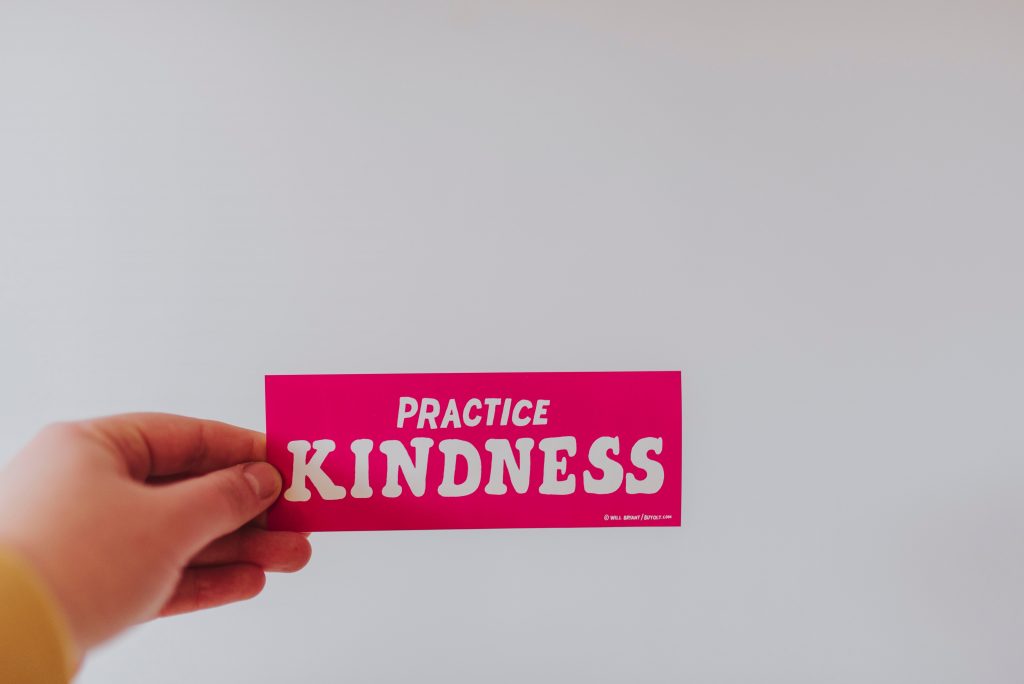
For this week, spend 5 minutes a day practicing inclusion or learning more about it. Choose some actions or do some reading – whichever fits you best at this time.
Kindness actions for Week 4: Be Inclusive
Stop inappropriate jokes
Take action when you hear someone make an inappropriate joke or comment. Don’t let it slide in order to preserve peace – the peace was already disturbed by the bad joke.
Stand up for someone who might not be comfortable standing up for themselves.
Try this tactic to push back at the inappropriate person: calmly say “I’m surprised you are comfortable saying that“.
The phrase highlights their poor comment without being accusatory. Read more in the article ‘Say What? How to respond to an offensive comment‘.
Invite participation
Create an inclusive environment by purposefully inviting people to participate in meetings, discussions and decisions when appropriate. There are lots of ways to do this – such as asking the opinion of a quiet person.
When debating ideas, you can also think in terms of ‘Yes, and…‘. The ‘Yes, and’ technique from improvisational comedy can also be used at work. It allows you to agree with a previous comment, add your thoughts to it and move the discussion forward.
By contrast, if you say ‘no’ before adding your thoughts, you risk shutting down the conversation. For more information about this technique, check out the book “Getting to ‘Yes And’ The Art of Business Improv” by Bob Kulhan.
Another action to invite participation is to think of yourself as a ‘host’ in a meeting. As host, you gauge mood in the room, encourage introverted people to speak up and help keep things on track. You can practice being a host whether you are the meeting leader or not.
Monitor your language
Our language tends to show our unconscious bias. This week, practice paying attention to the language you use.
One of my personal dislikes is when people (often even other women) use the term ‘girls’ to refer to women in the workplace. Adult females at work are not ‘girls’ – regardless of their role in your company.
Also consider bias when addressing a group of people. For instance, instead of a phrase like ‘hey guys’, choose a gender neutral phrase like ‘folks’ or ‘team’. This 2013 Forbes.com article by Kashmir Hill called ‘Girls? Ladies? Folks? Here’s a visual guide to what you should call that group of individuals’ links to a neat visual that can help you navigate the complexity of choosing a new term.
Read more about ‘Be Inclusive’ for Week 4
The suggested actions for Week 4 include: stop inappropriate jokes, invite participation and monitor your language.
If you are still grappling to understand ‘inclusion’, try reading some of these related articles.
Traits of inclusive leaders
In their HBR Ascend article ‘How to be an inclusive leader‘, Juliet Bourke and Andrea Espedido share results of a 4100 person survey that examined the leadership traits for inclusive leaders.
They found 6 traits of inclusive leaders: visible commitment, humility, awareness of bias, curiosity about others, cultural intelligence, and effective collaboration. Check out their article for more details and suggestions.
Inclusion through introductions
At The Muse, Lily Herman wrote about inclusion in her article ‘5 Effortless Ways to Be More Inclusive (and Known as the Best Co-worker Ever)’. She explores inclusion in specific work situations such as networking, welcoming a new employee, social media and introducing people. Ease the way for other people with her suggestions here.
Data Analysis & Conclusion
To analyze the success of your experiment consider these questions.
- As you approached the challenge to ‘Be Inclusive’ were you comfortable or uncertain?
- Did you practice the action or dive deeper into the reading? Or both?
- If you practiced the inclusion actions, how did people react?
- Were there any negative reactions?
- Did you consider inclusion beyond work?
- Did your inclusive actions seem to positively spark inclusion in others?
- Did you see a positive reaction that will encourage you to continue?
Share your results
Please share your conclusions and experience in the comments or email me and let me know how it went! You can reach me at ann@howlead.com.
Weekly themes for your Kindness Experiments
Week 1: Common courtesy
Week 2: Tone and body language
Week 3: Stop complaining
Week 4: Be inclusive
Week 5: Life outside hierarchy (coming soon)
Week 6: Curb judgmental thinking (coming soon)
Link to Kindness resources
Some terrific research and writing have been done regarding kindness – work-related and also more broadly focused.
I provide a deeper look at kindness on this blog in my article On Kindness at Work
The Bedari Kindness Institute at UCLA recently launched to research various elements of kindness. #UCLAKindness
The VIA Institute on Character has a discussion of kindness and includes it in their character assessment.
The Positive Psychology area of psychology does research and interventions related to kindness and similar topics. Find one positive psychology program at the University of Pennsylvania.

